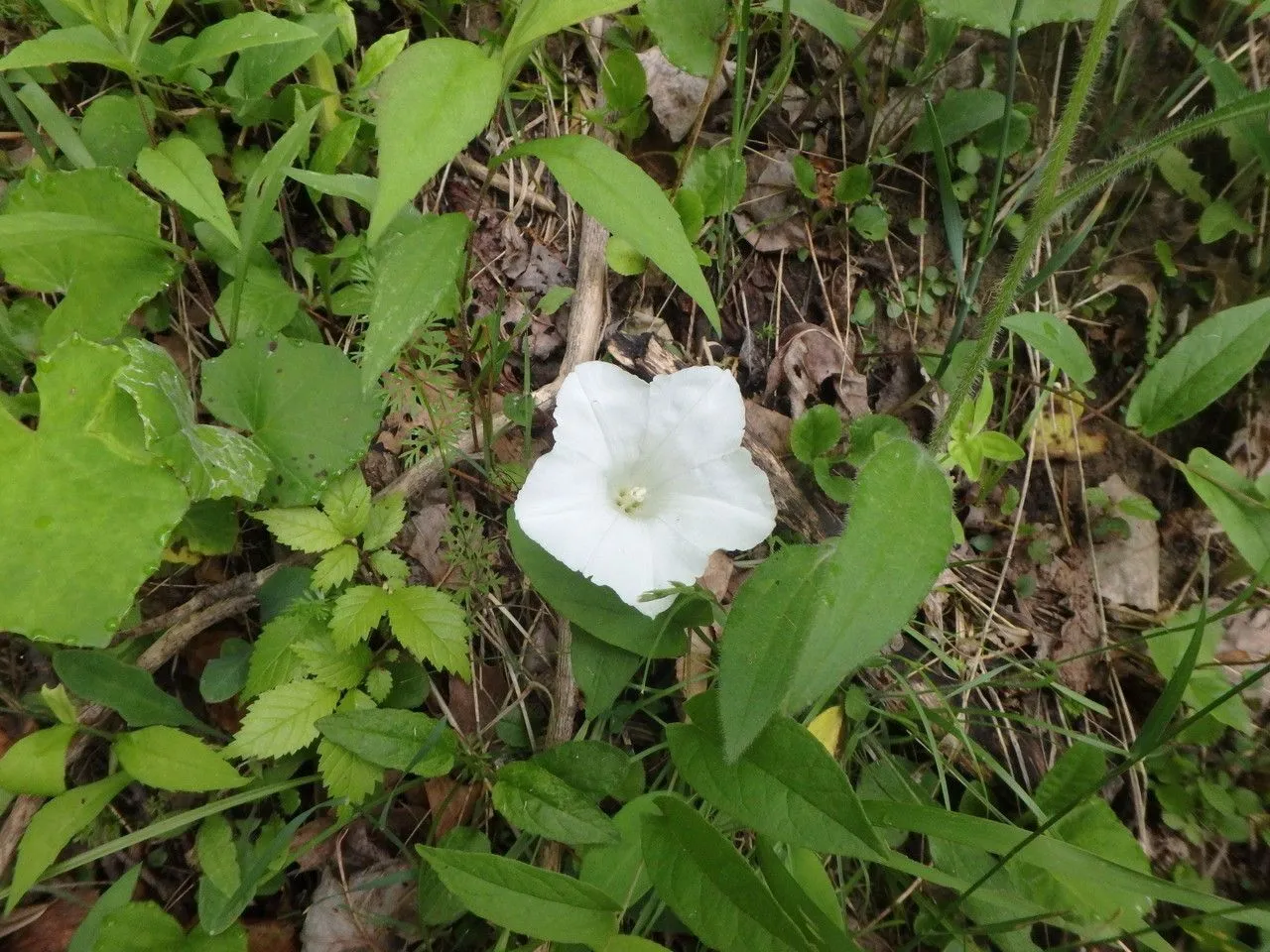
Author: (L.) Pursh
Bibliography: Fl. Amer. Sept. 1: 143 (1814)
Year: 1814
Status: accepted
Rank: species
Genus: Calystegia
Vegetable: Unknown
Observations: E. Canada to NC. & E. U.S.A.
The low false bindweed, scientifically known as Calystegia spithamaea, is a fascinating plant species belonging to the Convolvulaceae family. Originally documented in “Flora Americae Septentrionalis” in 1814 by Pursh, this plant has continued to intrigue botanists and plant enthusiasts alike.
Flourishing predominantly in regions of Eastern Canada and the Eastern United States, stretching as far south as North Carolina, the low false bindweed is notable for its distinctive growth patterns and environmental adaptability. It thrives in a range of habitats including meadows, open woods, and roadside areas, managing to prosper in conditions that might challenge less resilient species.
One of the defining characteristics of Calystegia spithamaea is its creeping, vine-like growth habit, although it may not climb as aggressively as some of its relatives within the Convolvulaceae family. This plant features delicate, white to pinkish flowers that typically bloom in late spring to early summer. These blooms are not only attractive but also play a crucial role in the local ecosystems, attracting a variety of pollinators, including bees and butterflies.
The leaves of the low false bindweed are equally distinctive, often taking on an oval to heart-shaped form with a smooth texture. They provide a lush green backdrop that sets off the plant’s flowers beautifully.
Despite its visual appeal, the low false bindweed is considered somewhat of a double-edged sword by gardeners and farmers. While it enhances the aesthetic appeal of natural landscapes, it can also exhibit invasive tendencies under certain conditions, competing with more desirable plants for space and resources.
In summary, Calystegia spithamaea is a species with a storied history and significant ecological value. Its ability to thrive in various environments and its charming floral display make it a noteworthy plant species, both in the wild and for those interested in naturalizing gardens and landscapes. However, careful management is recommended to ensure it does not overshadow other plant species.
Eng: low false bindweed, dwarf bindweed, low bindweed, upright bindweed
Fra: liseron nain
En: Low false bindweed, Dwarf bindweed, Low bindweed, Upright bindweed
Fr: Liseron nain
Taken May 26, 2019 by Ron Ron (cc-by-sa)
Taken Jan 1, 1900 by EOL − John Hilty (cc-by-nc)
Taken Jan 1, 1900 by EOL − John Hilty (cc-by-nc)
Taken Jan 1, 1900 by EOL − John Hilty (cc-by-nc)
Taken Jun 26, 2015 by EOL − botany08 (cc-by)
Taken Jun 26, 2015 by EOL − botany08 (cc-by)
Taken Aug 23, 2015 by EOL − Allen (cc-by-nc)
Family: Myrtaceae Author: (F.Muell.) K.D.Hill & L.A.S.Johnson Bibliography: Telopea 6: 402 (1995) Year: 1995 Status:…
Family: Rubiaceae Author: Pierre ex A.Froehner Bibliography: Notizbl. Bot. Gart. Berlin-Dahlem 1: 237 (1897) Year:…
Family: Sapindaceae Author: Koidz. Bibliography: J. Coll. Sci. Imp. Univ. Tokyo 32(1): 38 (1911) Year:…
Family: Asteraceae Author: A.Gray Bibliography: Pacif. Railr. Rep.: 107 (1857) Year: 1857 Status: accepted Rank:…
Family: Fabaceae Author: Medik. Bibliography: Vorles. Churpfälz. Phys.-Ökon. Ges. 2: 398 (1787) Year: 1787 Status:…
Family: Aspleniaceae Author: (Cav.) Alston Bibliography: Bull. Misc. Inform. Kew 1932: 309 (1932) Year: 1932…